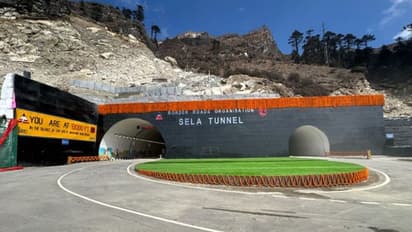Sela Tunnel, world's longest twin-lane tunnel, near China border in Arunachal Pradesh opens; SEE PHOTOS
Constructed by the Border Roads Organisation (BRO) at a cost of Rs 825 crore, the project includes two tunnels spanning 1,003 meters and 1,595 meters, respectively, along with 8.6 km of connecting roads.
Stay updated with the Breaking News Today and Latest News from across India and around the world. Get real-time updates, in-depth analysis, and comprehensive coverage of India News, World News, Indian Defence News, Kerala News, and Karnataka News. From politics to current affairs, follow every major story as it unfolds. Get real-time updates from IMD on major cities weather forecasts, including Rain alerts, Cyclone warnings, and temperature trends. Download the Asianet News Official App from the Android Play Store and iPhone App Store for accurate and timely news updates anytime, anywhere.
Read more Photos on
